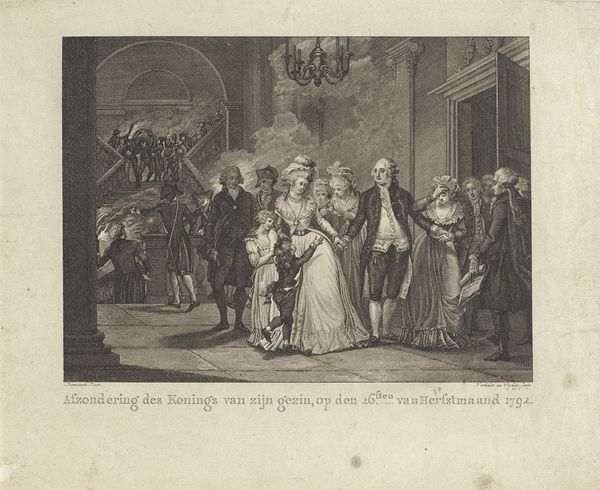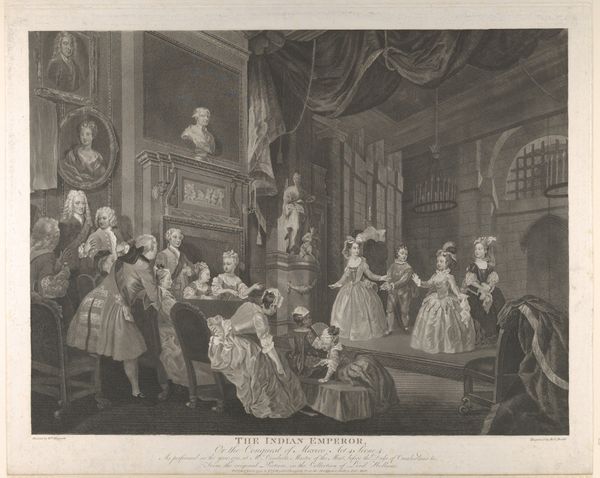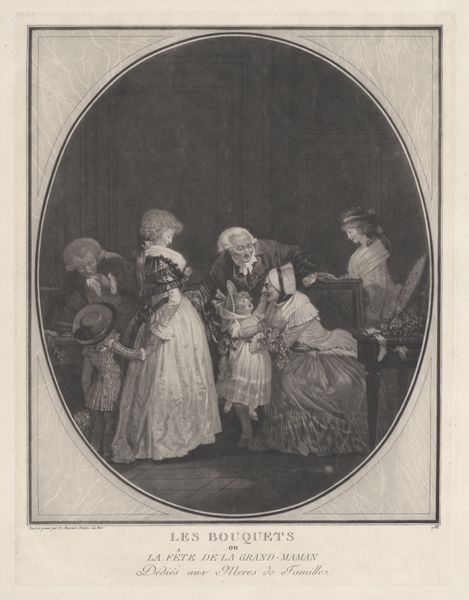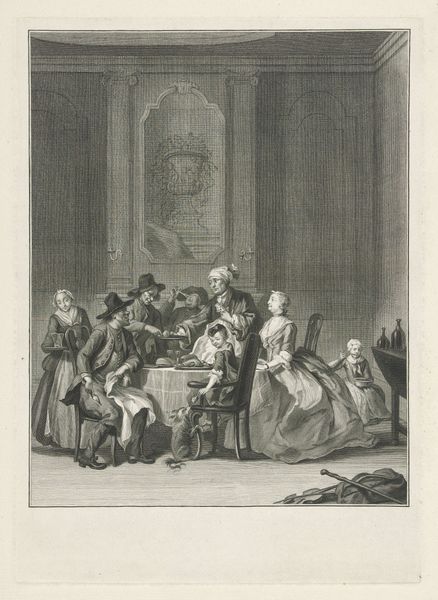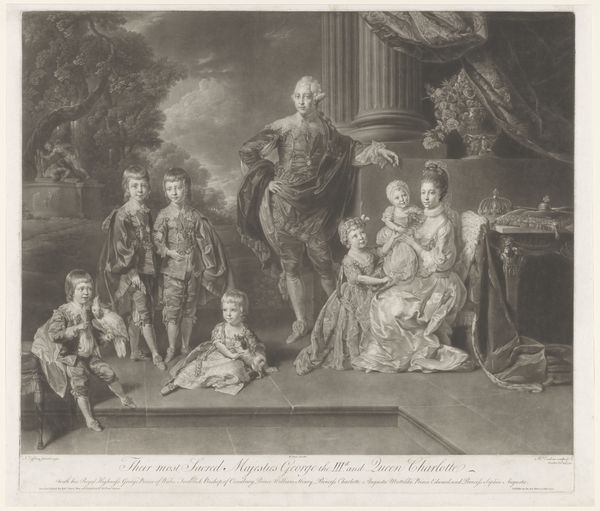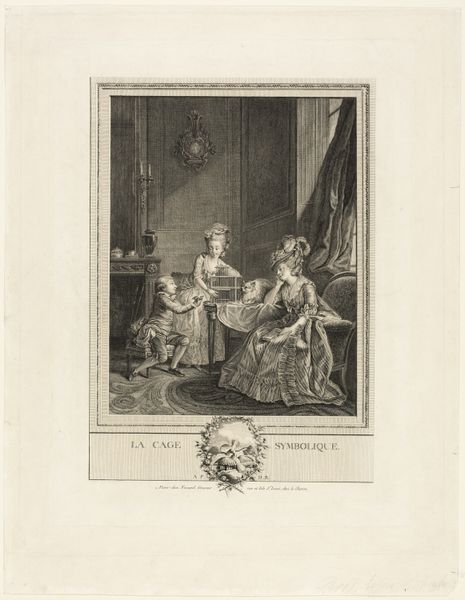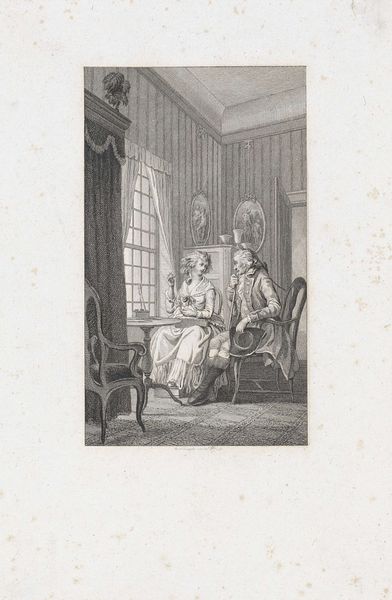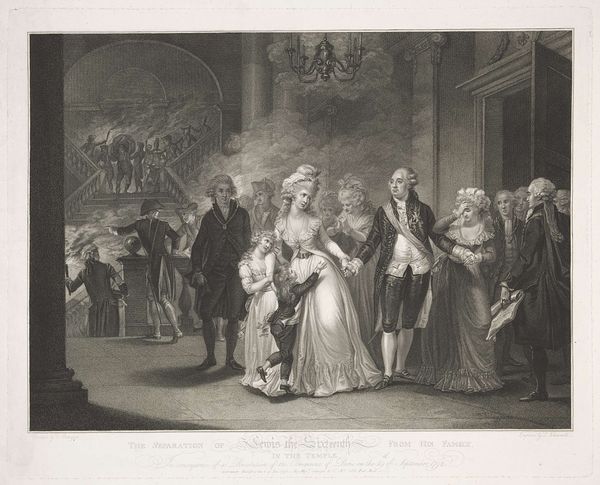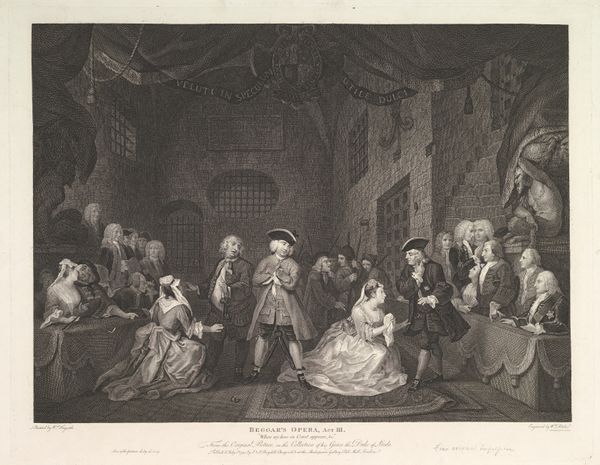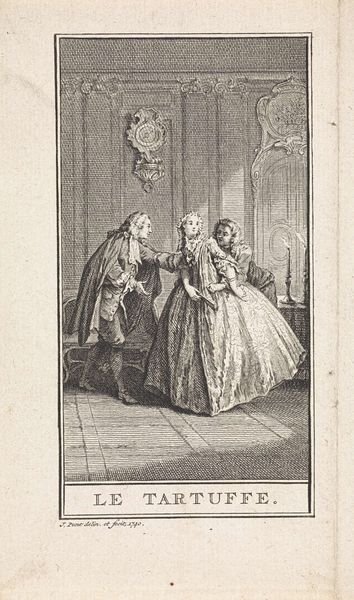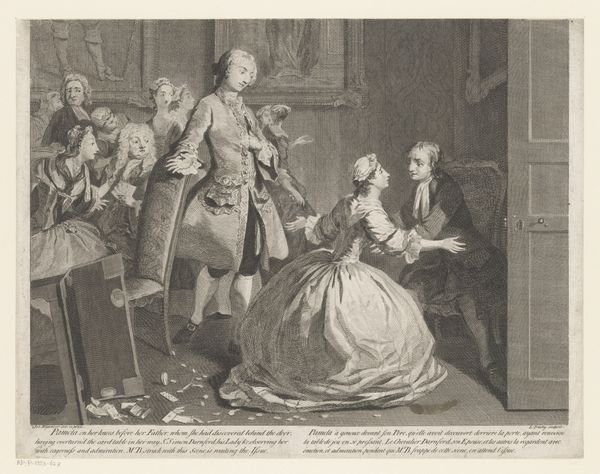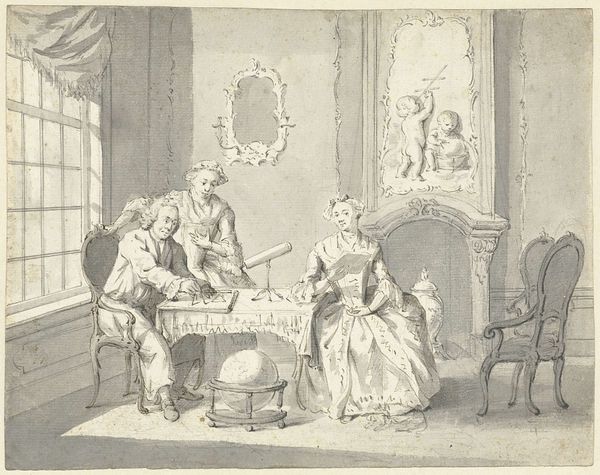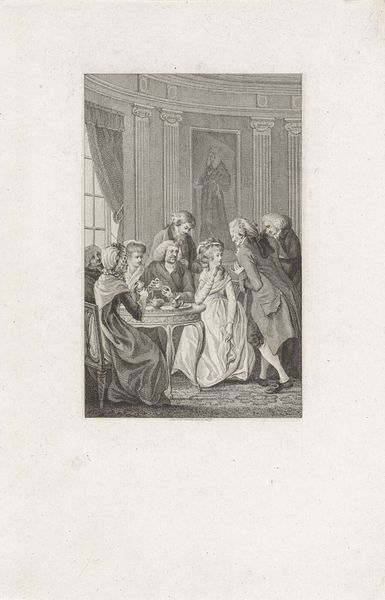
Dimensions: height 383 mm, width 449 mm
Copyright: Rijks Museum: Open Domain
Curator: This engraving by Jacob Houbraken, titled "De Liereman", dates from between 1762 and 1764. It's currently housed here at the Rijksmuseum. Editor: It’s striking. A posed family scene, almost staged, yet there's an underlying tension. It has something of a social commentary quality. Curator: Precisely. It presents us with a window into 18th-century Dutch society. We see a family group—likely prosperous given their attire. Consider their placement—on the steps of what appears to be a rather grand house. But then there’s the "liereman," or hurdy-gurdy man, standing apart. His garb suggests a very different economic standing. Editor: He seems quite literally excluded, situated slightly outside, with one foot on the curb and another one already on the sidewalk. His presence as a performer hints at systems of patronage. Curator: Absolutely. And notice the gazes. Some family members appear to be almost ignoring him, lost in their own world, while others are engaging with him—or rather, his labor—in different ways. This speaks volumes about the social hierarchy of the time. The work's focus on clothing speaks to the way identity was not just shaped, but constrained and defined by materiality. Editor: The engraving itself as a medium—mass produced to create imagery cheaply. The subject in contrast being the performance and the upper classes who consume this entertainment—it almost creates an ironic material cycle! Curator: And thinking about Houbraken himself, an accomplished engraver who often produced portraits of prominent figures…here, he turns his attention to a different social stratum. The very act of capturing this interaction elevates a traditionally marginalized figure into the realm of art, forcing us to question those prevailing structures. Editor: It forces us to confront not only our consumption of labour, but also our engagement with individuals across varying strata of class and economic position. Are they actually acknowledged? Curator: So, what appears on the surface to be a simple genre scene actually contains layers of commentary on identity, class, and the consumption of labor in 18th-century Netherlands. Editor: Ultimately, by analyzing material means of production and those classist divisions, we get a broader perspective on this time and location in history. Thank you.
Comments
No comments
Be the first to comment and join the conversation on the ultimate creative platform.
